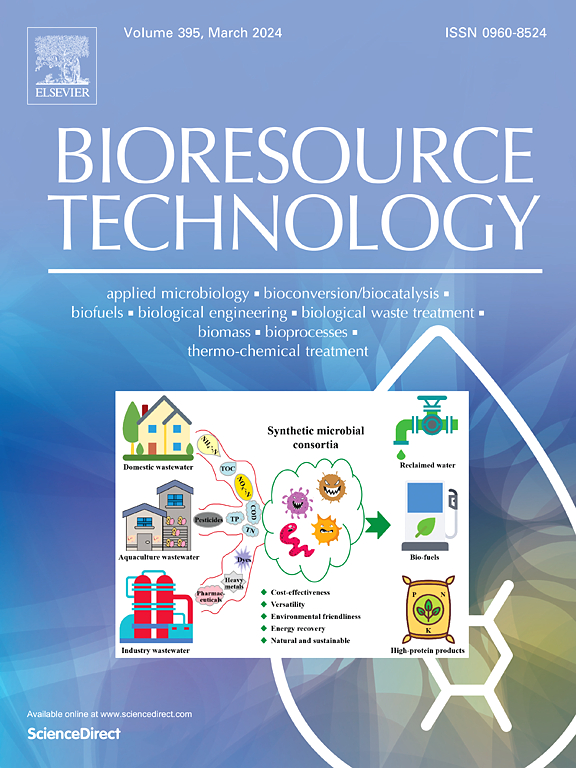利用生物炭-微生物增强生物保留排水系统去除农业径流中的三氯卡班:微生物群落的性能和作用
IF 9
1区 环境科学与生态学
Q1 AGRICULTURAL ENGINEERING
引用次数: 0
摘要
三氯卡班(TCC)是一种广泛使用的抗菌剂,已被检测到是一种农业环境污染物。我们的目标是利用生物炭(BC)、游离细胞(FC)和生物炭固定化细胞(IC)增强的生物保留排水沟系统修复tcc污染的农业径流。在批量测试中,FC的去除率最高(83%),其次是IC(62%)和BC(58%)。在长期系统中,IC和FC表现出相当的TCC去除效率(33 - 35%),而BC仅去除20%的TCC。TCC的减少是通过生物降解以及生物炭和细胞外聚合物(EPS)的吸附来实现的。微生物对TCC毒性的适应性反应包括细胞收缩和附属物的形成。共生单胞菌和潜在的碱生菌有助于TCC的降解。偶氮螺旋体和黄杆菌可能参与了EPS的产生。总的来说,我们的研究结果表明,生物炭-微生物增强的生物保留排水沟系统有望清理受污染的农业径流。本文章由计算机程序翻译,如有差异,请以英文原文为准。

Triclocarban removal in agricultural runoff using biochar-microbe-augmented bioretention drainage systems: Performance and role of microbial community
Triclocarban (TCC) is a widely used antimicrobial agent and has been detected as an environmental contaminant in agricultural areas. We aimed to remediate TCC-contaminated agricultural runoff using a bioretention drainage ditch system augmented with biochar (BC), free cells (FC), and biochar-immobilized cells (IC). In a batch test, FC achieved the highest removal efficiency (83 %), followed by IC (62 %) and BC (58 %). In a long-term system, IC and FC exhibited comparable TCC removal efficiencies (33–35 %), whereas BC removed TCC only 20 %. The TCC reduction was achieved through biodegradation as well as adsorption by biochar and extracellular polymeric substances (EPS). The adaptive responses of the microbes to TCC toxicity included cell shrinkage and appendage formation. Comamonas and potentially Alcaligenes contributed to the TCC degradation. Azospira and Flavobacterium were likely involved in EPS production. Overall, our findings suggest that biochar-microbe-augmented bioretention drainage ditch systems hold promise for cleaning up contaminated agricultural runoff.
求助全文
通过发布文献求助,成功后即可免费获取论文全文。
去求助
来源期刊

Bioresource Technology
工程技术-能源与燃料
CiteScore
20.80
自引率
19.30%
发文量
2013
审稿时长
12 days
期刊介绍:
Bioresource Technology publishes original articles, review articles, case studies, and short communications covering the fundamentals, applications, and management of bioresource technology. The journal seeks to advance and disseminate knowledge across various areas related to biomass, biological waste treatment, bioenergy, biotransformations, bioresource systems analysis, and associated conversion or production technologies.
Topics include:
• Biofuels: liquid and gaseous biofuels production, modeling and economics
• Bioprocesses and bioproducts: biocatalysis and fermentations
• Biomass and feedstocks utilization: bioconversion of agro-industrial residues
• Environmental protection: biological waste treatment
• Thermochemical conversion of biomass: combustion, pyrolysis, gasification, catalysis.
 求助内容:
求助内容: 应助结果提醒方式:
应助结果提醒方式:


